10 Greatest New Beginnings In Star Trek
Spring is a time for rebirth, but what does rebirth look like in the final frontier?
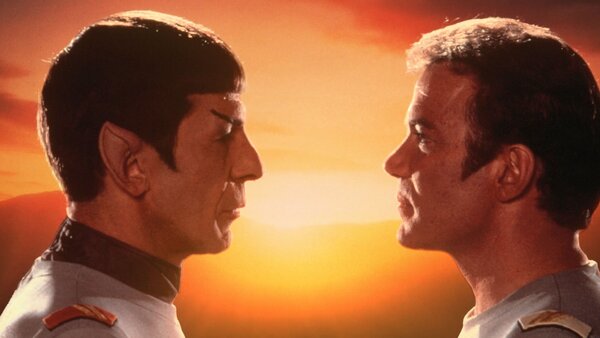
In the current age of nostalgia, new beginnings are more important than they have ever been. As heartwarming as it was to see the Enterprise-D fly again, or William Shatner's Kirk clasp Spock's hand for the first time in years, a new start must be the way to boldly go forward.
Shows like Strange New Worlds must balance the task of crafting new, exciting stories, while also including characters from other iterations, previously played by different actors. Jeffrey Hunter, Sean Kenny, and Bruce Greenwood had all commanded the Enterprise before Anson 'The Peak' Mount donned the Starfleet gold. Having said that, Mount's Pike is a new, inspired take on one of Star Trek's oldest legacy characters.
While other Star Trek properties have had varying successes with handling nostalgia, each of them has offered something new and fresh to the universe. Which of them did it best? Let's take a look.
10. DS9 Gains A Klingon And Goes Bald

It is sometimes a little easy to look at the gap between seasons three and four of Deep Space Nine and say 'That's where the show gets really good!' While that's doing a serious disservice to the first three years, there is a certain...logic to the statement.
DS9's debut year was truncated (for a '90s Trek) and was then followed by a somewhat standard second season. The show was still following the groundwork laid by The Next Generation, focusing on episodic storytelling, while the actual shooting method softened the edges of every scene. Darker stories bled through early- on (Duet, Necessary Evil etc) before The Jem'hadar kicked things into gear.
The third year saw an increased Dominion threat, now in Changeling form, as well as the introduction of the USS Defiant. However, it was the fourth year, and The Way Of The Warrior specifically that saw Deep Space Nine both hit its groove and take a new direction. Avery Brooks was finally allowed to shave his head, Michael Dorn joined the cast as a series regular, and the Klingon Empire decided it was time to 'go nuts'.
Season four of Deep Space Nine ranks among the very best of Star Trek's offerings, not least for the fact it offers a bold new direction for the show and introduces themes that still resonate in the franchise to this day.
9. V'Ger Merges With The Creator
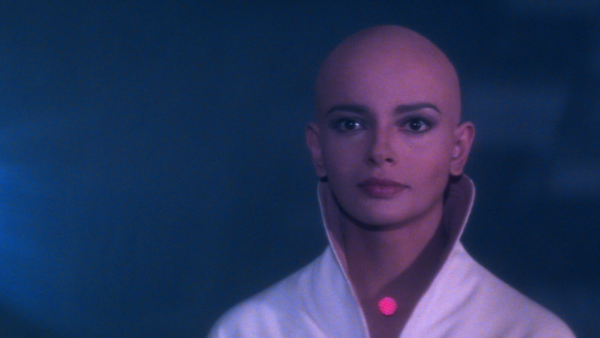
Persis Khambatta's Ilia was a heart of Star Trek: The Motion Picture in 1979. Though her character technically dies about halfway through the film, the Ilia Probe offers us a childlike view of the universe, one wrapped around a devastatingly powerful energy source, one capable of destroying all life in the galaxy.
V'Ger's long journey home echoed humanity's search for something greater than itself. The film was an existential exploration of the universe, told through the lens of an admittedly already-covered premise. The Changeling, an Original Series episode that featured the probe, Nomad, did on the small screen what The Motion Picture set out to do on the big screen.
The Motion Picture is the superior effort, with both the original budget and the recent remaster finally completing this vision of new life in the universe. The film's climax gives us a soaring Jerry Goldsmith score while Ilia and Decker merge. As McCoy puts it - 'it's a long time since I've delivered a baby!'
Though met with lukewarm reviews at the time, The Motion Picture was quintessential Star Trek. It took the old format from The Original Series and added a cinematic majesty that simply hadn't been possible before. Now, here was Star Trek as it was meant to be seen and heard. As Admiral Kirk would say:
Young minds, fresh ideas.
8. Wesley Leaves Starfleet To Join The Traveller
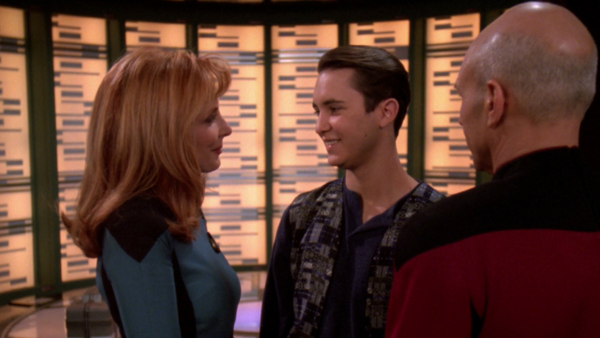
For this entry, a certain level of future knowledge is required. As it stands Journey's End is a bit of a mixed episode. Wil Wheaton returned to The Next Generation for the final time (on the small screen) to give Wesley Crusher some closure. He is argumentative and abrasive and manages to annoy just about everyone. He then goes on a vision quest on the Dorvan colony, stops time, and goes off with the Traveler.
While the episode is a little unsatisfying, it is what we have learned in the years since that makes this the start of something special. Once he began his travels, Wesley was inducted into the Supervisors - a collective who worked on behalf of the Travelers.
By the time Dal and the Protostar crew meet Wesley, he seems to have graduated toward becoming a Traveler himself. Though his existence may be a confusing one, it is exciting, and offers the young man the full scope of possibilities for his Mozart-level genius, as Eric Menyuk's Traveler once described him.
Knowing where Wesley ends up makes Journey's End a far more satisfying watch, while it also signalled the true beginnings of the Maquis.
7. Enterprise-D Alongside The Enterprise-G
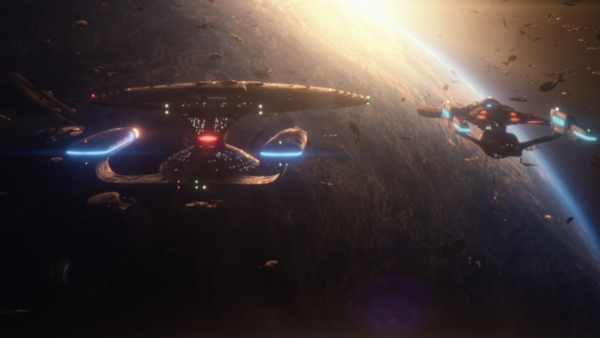
The Last Generation was the swansong for Star Trek: Picard and, to date, is the final appearance of The Next Generation crew. Therefore, one could be forgiven for looking at it as an ending, rather than a new beginning. However, that side-by-side flight of once and future Enterprises offered a far more meaningful hope of things to come.
While the rechristened Enterprise-G might have felt like an afterthought at the time, it is the implication of legacy that truly soars. The return of the Enterprise-D in Võx signified a full-circle moment for the crew that started in Q, Who? The Last Generation is dripping in memories of Star Trek old, though planting more seeds for Star Trek to come.
Seven's promotion to captain of the Enterprise-G, along with Raffi's posting as first officer, cemented both Voyager and Picard as part of a larger story arc. Jack Crusher's run-in with Q during the closing credits offers hope for more mischief to come, while the laughing poker game reminds the audience that the original crew are still very much alive and well.
In essence, that shot of the Enterprise-D flying alongside the (future) Enterprise-G seems crafted to usher in a new era for Star Trek. Though it is currently untapped (that we know of) they have certainly unveiled a well of potential for future writers to mine.
One has to wonder about the sheer number of crippled Sovereign class ships in that shot though. Maybe one of them had an E suffix to its registry? Best ask Worf!
6. It's Me - Dax
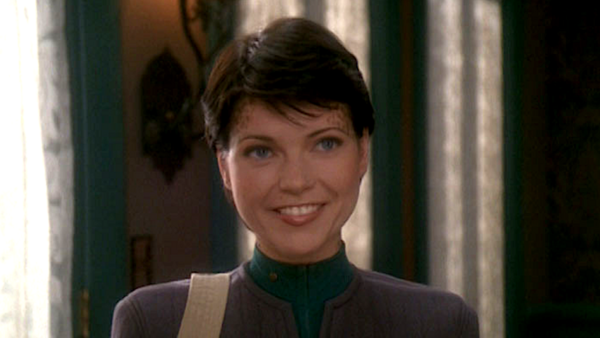
The odds were against Nicole De Boer when she joined Deep Space Nine in the show's final season. She was introducing a new character late in the run, while also replacing a beloved fan favourite in the form of Terry Farrell's Jadzia Dax as well. It would take years for the details of that departure to become public which, for Ezri's introduction, was a blessing.
Even knowing what happened behind the scenes, Ezri's introduction still proves a positive addition to the show. While the 'old man' had transformed overnight from a wise advisor to uncertainty personified, this change in dynamic helped to breathe new life into the show's last outing.
De Boer soars in the role, giving the audience a new character to root for. Her interactions with the existing cast, particularly with Avery Brooks and Michael Dorn, proved that it wasn't too late to bring something new to the line-up. It had worked well in the fourth season and it worked again in the seventh.
In another universe, the audience could have been blessed with Farrell and De Boer sharing the screen. As it stands, though losing Jadzia was a dreadful blow, gaining Ezri not only softens it but offers a fresh perspective on an already-suffocating war.
5. The First Flight Of The USS Prodigy

Star Trek: Prodigy remains one of the greatest entries into the overall Star Trek universe. It combines the optimism and joy of the franchise at its most explorative with the scale and drama of the darkest moments. Its second season saw creatures that could erase people from history, a terrifying thought with existential implications.
The final episode to date sees the show tie in with the beginning of Star Trek: Picard, linking the synth attack on Mars with these recruits to Starfleet Academy. After two years of following the Protostar, Hologram Janeway, and then the Voyager-A, this blew the scale of the show wide open.
For a moment, it seems as though everyone's career is about to stop in its tracks while Starfleet focuses its attention on everywhere but exploring strange new worlds. Thankfully, Admiral Janeway, Captain Chakotay, and the Doctor have other plans. Though the Protostar is lost, the USS Prodigy is fully prepped and ready to fly. All she needs is a crew.
Gwyn, Dal, Rok-Tahk, Jankum, Zero, Murf, and Ma'jel are given field commissions and instructed to continue Starfleet's primary mission: to seek out new life. Everything about this moment fulfils the promise of Star Trek: Prodigy, and of the wider universe itself. While there may be excitement in those big space battles, that's not what Star Trek is about at its core.
The maiden voyage of the USS Prodigy exemplifies this.
4. To The Enterprise...And To Absent Friends
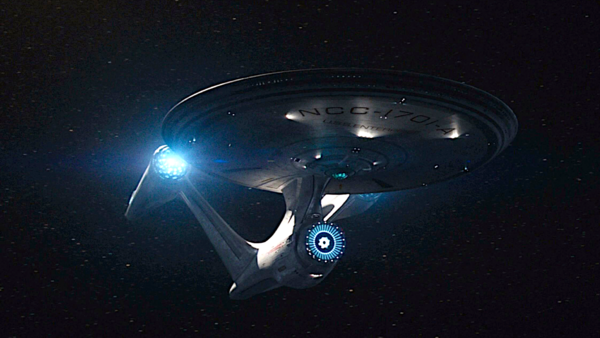
Star Trek Beyond is currently the most recent theatrical film in the Star Trek universe, so the promise of its ending has yet to be fulfilled. However, when the film was released in 2016, Star Trek was exclusively a film franchise. Star Trek: Enterprise had been cancelled in 2005. When the Enterprise-A took flight in the closing moments of the film, the audience had every reason to believe that more Star Trek was coming, with a cinematic flare.
They were correct, though not as they had thought. Star Trek: Discovery debuted the following year, helping to usher in one of the busiest periods in the franchise's history. Between 2017 and 2025, Discovery, Picard, Lower Decks, Prodigy, the Short Treks and Strange New Worlds all appeared, dropping more than 200 new episodes into the Trek universe.
While Star Trek 4 remains in limbo, the cast of Beyond has spoken about their willingness to return. The 2016 film may have been a teaser rather than a true debut, but when considering what has been delivered between films, the launch of the Enterprise-A really did see a new beginning in Trek, even if it went in an unexpected direction.
3. A Little Bit Of Borg Never Hurt Anybody

Star Trek: Voyager debuted with a lot of weight on its shoulders. Not only was it the first Trek iteration to have a woman commanding the main ship, it was also the flagship show of a fledgling network, UPN.
The first couple of years were a challenge for Kate Mulgrew. She was beset by producers fretting over her hair, while remaining unsure about the premise. The Maquis may have been wrapped into the Starfleet crew by Caretaker's end, but at least the ship was still stranded in the Delta Quadrant.
Scorpion Part 2 opened the show's fourth season and saw the arrival of Jeri Ryan's Seven of Nine. That may have shaken the cast up, and certainly caused friction between Ryan and Mulgrew, but it also was the undeniable breath of fresh air that Voyager needed. Though it also led to the departure of Jennifer Lien, Seven's story was intended to boost flagging viewership numbers in a way that Kes's had not successfully done.
The legacy of Seven's story is such that she returned for all three seasons of Star Trek: Picard, rising from Fenris Ranger to captain of the Enterprise-G. The road wasn't entirely smooth and not every storyline truly worked. However, despite the obvious ratings-grab that her introduction and the silver cat-suit may have been, Ryan and the writers created a new direction for Star Trek: Voyager that helped that show, and the later Picard, run for as long as they both did.
2. Faith Of The Fourth

Star Trek: Enterprise was designed to be a new beginning for the Trek universe. As Voyager closed the stories set in the 24th century, Enterprise arrived to tell some new stories from the 22nd. While the show has aged well, it wasn't met with initial acclaim.
Broken Bow premiered in October 2001 while the world was still reeling from attacks on the World Trade Centre. Star Trek's happy optimism for the future was out of time. This hung over the first three seasons of the show, culminating in the Xindi Arc - Star Trek's obvious attempt to tackle the war on terror.
With that finally resolved by the end of the fourth season opener, Storm Front, Enterprise embarked on what became its final year. The fourth season of the show was a triumph in storytelling, eschewing weekly episodes for short, usually two-episode arcs. It was here that the show excelled, concentrating on stories that required more time to tell, but didn't fall victim to long-form fatigue.
Though the show's run was truncated, it clearly set the scene for the Earth-Romulan War teased in Balance Of Terror and then later in A Quality Of Mercy. Star Trek: Picard offered a canonical update to the NX-01 as the ship, new secondary hull in place, was in situ at the Fleet Museum.
While Star Trek: Enterprise's stories may exist almost solely on the printed page now, the show's final season opened up the door to a new form of storytelling, to old stories made fresh, to extended stays in the Mirror Universe, and to a future that may be imagined as opposed to depicted.
1. Second Contact, Second Chances

Back in 1973, The Animated Series debuted as a continuation of The Original Series, with almost all of the cast returning. The show may have been constrained by the animation techniques available at the time, but still showcased excellent writing and acting. That it was subsequently ignored for so long is a disservice, one that is only in recent years being addressed.
When the show was cancelled, Star Trek shied away from animation for almost fifty years, finally returning to the medium with the Short Treks, Ephraim And Dot and The Girl Who Made The Stars. Whether these were proofs of concept for a full series or not, they helped reintroduce the audience to the format.
Then, along came Lower Decks. Helmed by Mike MacMahon, this comedy series captured lightning in a bottle. It managed to appeal to legacy fans and new fans alike, while also straddling audience demographics. It was welcoming to younger viewers as well as adult audiences. Running for five seasons, it helped breathe new life back into the franchise.
It aired alongside Picard, Discovery, Strange New Worlds, and Prodigy. Whether a victim of marketing or other adversaries, Prodigy failed to capture that same audience, effectively leaving Lower Decks as the sole torchbearer for animated Star Trek.
Its five-season run is nothing short of an achievement in the current uncertain climate of television. At the time of writing, the future for Star Trek is uncertain, but Lower Decks opened the door once again to animation working across different audiences within the Trek sphere.